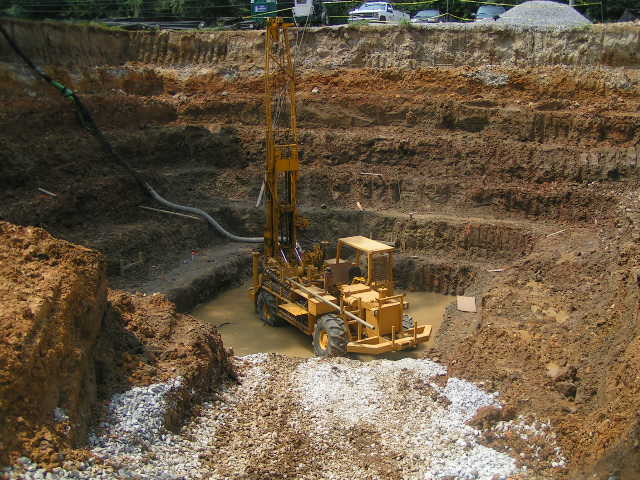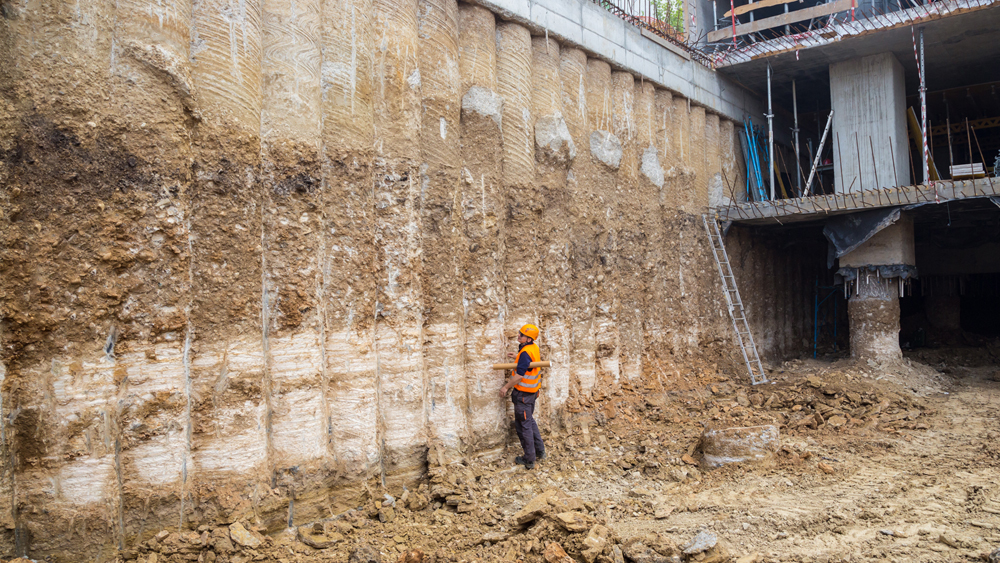Leading Geotechnical Companies in South Africa: Who You Ought to Know
Wiki Article
Discovering the Basic Concepts and Applications of Geotechnical Engineering for Sustainable Framework Development
The intersection of geotechnical engineering and lasting facilities development presents an engaging chance to boost both layout effectiveness and ecological responsibility. By comprehending vital principles such as dirt auto mechanics, site characterization, and structure design approaches, engineers can develop services that are not just effective but additionally decrease environmental footprints. The combination of sustainable practices into geotechnical jobs increases concerns concerning resource application and lasting strength. As we take a look at these principles, the ramifications for future framework projects warrant cautious factor to consider, especially in an age progressively specified by ecological challenges.Key Concepts of Geotechnical Engineering
Recognizing the crucial principles of geotechnical engineering is important for designing sustainable facilities (all about geotechnical engineering). This discipline focuses on the communication in between soil, rock, and frameworks, playing an important function in the security and efficiency of engineering tasks. The primary concept is the evaluation of subsurface conditions via site examinations, which supply valuable details about soil residential properties, stratification, and groundwater degreesAn additional essential concept is the application of efficient stress concept, which helps designers understand exactly how soil habits changes under differing loads. This understanding is critical for reviewing the bearing ability of structures and making sure that structures can endure both vibrant and fixed pressures.
Furthermore, the principles of soil-structure communication and incline security are indispensable to geotechnical style, as they educate decisions on the placement and style of retaining slopes, walls, and embankments.
Finally, geotechnical engineers must take into consideration sustainability by advertising the use of locally sourced products, reducing environmental impact, and optimizing designs for longevity. By sticking to these concepts, geotechnical engineering contributes significantly to the creation of resistant and sustainable infrastructure that fulfills the requirements of society while shielding the setting.
Soil Mechanics and Its Importance
Soil auto mechanics functions as the structure of geotechnical design, supplying the clinical concepts required to assess the actions of dirt under various problems. Understanding dirt mechanics is essential for anticipating just how soil will react to tons, modifications in wetness material, and other ecological variables. This understanding permits engineers to develop frameworks that can withstand the stress applied by the soil and make sure stability and security.The research of dirt mechanics includes numerous aspects, including dirt category, shear permeability, compressibility, and toughness. These elements affect the design of foundations, maintaining wall surfaces, and other geotechnical frameworks, making it necessary to examine soil residential properties accurately. The shear strength of dirt directly influences the stability of inclines and excavations, while compressibility impacts negotiation predictions for buildings.
Additionally, dirt technicians plays a vital function in lasting facilities advancement. By comprehending the soil's behavior, engineers can minimize environmental influences, maximize product usage, and improve the long life of frameworks. This combination of soil mechanics into geotechnical design techniques not just makes sure safety however additionally adds to the total sustainability of construction jobs, advertising effective resource administration and environmental stewardship.
Website Characterization Methods
Reliable website characterization strategies are essential for collecting essential info concerning subsurface conditions before building - about geotechnical engineering. These strategies provide useful insights into dirt residential or commercial properties, rock developments, groundwater levels, and prospective geohazards, thereby notifying task layout and mitigating threatsOne extensively used method is drilling, which permits direct tasting of dirt and rock layers. This can be complemented by in-situ testing, such as Common Penetration Examinations (SPT) and Cone Infiltration Tests (CPT), to assess dirt strength and stratification. Geophysical methods, consisting of seismic refraction and electric resistivity studies, enable non-invasive analysis of subsurface materials and frameworks, offering a broader perspective on geological problems.
Furthermore, research laboratory testing plays a vital function in analyzing dirt samples obtained from exploration. Tests such as grain dimension analysis, Atterberg limits, and triaxial shear tests produce vital information on dirt behavior under various loading conditions.
Integrating these site characterization methods not only boosts the understanding of website problems but also sustains sustainable infrastructure growth by making certain that jobs are developed with ideal safety margins and performance requirements. Thus, a comprehensive website characterization is vital for notified decision-making in geotechnical design.
Foundation Layout Approaches
Foundation style methods are important for guaranteeing the stability and longevity of frameworks in different geotechnical contexts. These approaches start with a thorough website examination, that includes soil testing and analysis to figure out the physical residential properties of the subsoil. Comprehending soil actions under lots is vital for selecting the ideal structure kind, whether superficial or deep.Superficial foundations, such as spread grounds or floor covering structures, are normally utilized when ideal soil layers are readily available near the surface. Alternatively, deep foundations, such as heaps or drilled shafts, are made use of in situations where surface dirts are inadequate to sustain structural loads.

Sustainable Practices in Geotechnical Engineering
The combination of sustainable techniques in geotechnical design plays an essential role in boosting the ecological and financial feasibility of facilities jobs. By focusing on source effectiveness and decreasing ecological influences, engineers can add to the development of resistant facilities systems.One trick sustainable technique includes the usage of alternate products, such as commercial spin-offs and recycled accumulations, which can decrease the need for virgin sources and lower carbon discharges. Additionally, dirt stabilization methods, consisting of the application of bioengineering techniques, boost soil properties while promoting ecological balance.
Moreover, the all about geotechnical engineering application of innovative geotechnical modeling and monitoring innovations enables better forecast and monitoring of ground conditions, causing enhanced design remedies and source usage. These technologies additionally promote the assessment of long-lasting efficiency, ensuring that structures stay functional and secure over their life expectancy.

Final Thought
To conclude, the concepts and applications of geotechnical engineering play a crucial role in lasting infrastructure growth. Emphasizing dirt auto mechanics, site characterization, and cutting-edge structure layout approaches boosts the strength and performance of frameworks. The assimilation of lasting techniques, consisting of the usage of locally sourced products and advanced stabilization strategies, not only optimizes resource utilization but additionally advertises ecological stewardship. Eventually, these efforts contribute to the production of infrastructure that successfully fulfills societal requirements while decreasing ecological effect.By recognizing key principles such as soil mechanics, site characterization, and foundation style methods, designers can develop options that are not only reliable but additionally lessen ecological impacts.Soil technicians serves as the structure of geotechnical design, supplying the clinical concepts required to examine the habits of dirt under various problems. Understanding dirt mechanics is essential for anticipating just how soil will certainly respond to lots, changes in wetness content, and other environmental variables.The research of dirt auto mechanics includes various elements, consisting of dirt category, shear permeability, compressibility, and strength. These factors affect the design of foundations, maintaining walls, and other geotechnical structures, making it crucial to evaluate dirt buildings precisely.
Report this wiki page